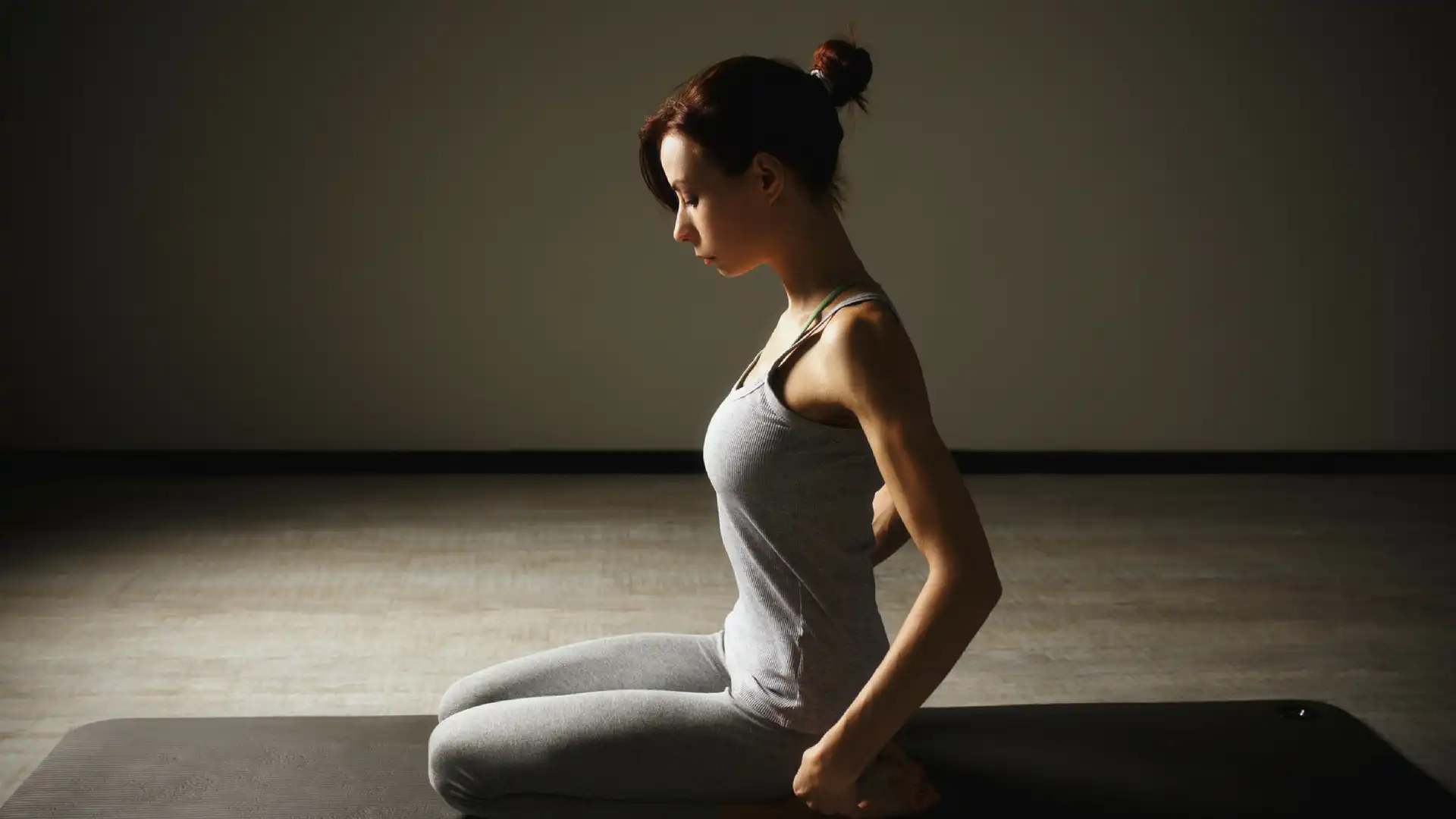How Poor Posture Can Lead to Physical and Mental Dis-Ease

Article At A Glance
Hours of sitting and staring at screens, lack of exercise, and poor body biomechanics all contribute to the symptom of poor posture. They may lead to other conditions, such as lack of focus, visual disturbances, depression, poor balance, protective muscle guarding, and more, writes renowned bodyworker Eric Dalton in this article. Learn yoga poses that can help counter the issue.
Poor posture is not a cause as much as it is a symptom. Essentially, it is the dysfunction of various systems in the body that are either over or under-functioning.
In most bodywork circles, we think of faulty posture as in terms of the “issues in the tissues.” In many cases, problems arise from strained or overused connective tissues and joints,.
But faulty posture can also be linked to visual or balance (vestibular) disorders that may be compromising the brain’s sorting and switching stations.

Image 1 – pontomedullary junction
Ponto Medullary Reticular Formation (PMRF) And Digital Dementia
Faulty posture can also be linked to “Digital Dementia,” a term coined by neuroscientist Manfred Spitzer to describe a condition caused by digital technology overuse that results in a breakdown of cognitive abilities. When most of us consider the term cognition, we think of our ability to think, problem solve, or do our work. But it can also be related to faulty posture.
To understand this link, we need to understand the functions of the pontomedullary reticular formation. This is a dynamic relay station located in the brainstem at the pontomedullary junction where the pons meets the medulla. It is considered the epicenter for postural control (Image 1). The pontomedullary reticular formation houses eight cranial nerves that carry out vital motor and sensory functions, including eye-ear coordination that aids in head-righting reflexes and balanced gait. When functioning properly, this structure inhibits cervicothoracic flexion, which, in turn, effectively resists gravitational exposure.
Those clients with pontomedullary reticular formation disorders may present with an upper cross syndrome pattern (i.e., forward jutted chin, internally rotated arms, protracted shoulder girdle, and t-spine hyperkyphosis). Each day these bodies battle gravity and, in the absence of an experienced manual, movement, and brain-based therapy, usually end up on the losing end.
How Poor Posture Can Lead to Physical and Mental Dis-Ease—And How Yoga Can Help Digital Dementia
Hours of sitting and staring at screens, lack of exercise, and poor body biomechanics all contribute to the symptom of poor posture. They may lead to other conditions, such as lack of focus, visual disturbances, depression, poor balance, protective muscle guarding, and more. When performing a postural assessment as part of a client’s intake exam, I’m not only looking at tissue issues but, more importantly, what the nervous system is doing with this information.
For example, I may include proprioceptive challenges such as one-legged standing to assess for vestibular (balance) dysfunction, gaze stabilization exercises for visual disturbances, or the Romberg (sway) Test for cerebellar weakness. Sensory impulses originating in the neck and ankles are particularly important. Proprioceptive input from the neck indicates the direction in which the head is turned, and cues from the ankles indicate the body’s movement or sway relative to the ground.
As sensory integration takes place through good bodywork and corrective proprioceptive exercises, the brain stem transmits impulses to the muscles that control movements of the eyes, head and neck, trunk, and legs, thus allowing a person to both maintain balance and have a clear vision while moving. Of course, multiple neurological systems contribute to optimal posture. Our goal is the synergistic integration of these systems to normalize and restore flexor/extensor synergy and postural stabilization during dynamic movement.
3 Yoga Balancing Poses to Promote Healthy Proprioception
Yoga’s emphasis on balancing poses can help promote clear proprioception. We traditionally think of balancing poses as those that require standing on one leg. These poses are, indeed, important for developing balancing skills. However, it’s important to practice balancing poses that require us to find balance with our bodies in varying orientations and relationships to gravity. Here are some suggestions for poses that challenge your balance in different ways:
- Vrksasana (Tree Pose): Yoga’s basic one-legged standing pose.
- Ubhaya Padangusthasana (Both Feet Big Toe Pose): This pose requires you to balance on your pelvis.
- Parsva Balasana (Hunting Dog Pose): Parsva Balasana teaches balance on your hands and knees.
Also, read...
4 Ways Yoga Impacts the Aging Brain
3 Yoga Practices to Rewind the Clock on Brain Aging
4 Ways Yoga Helps Alzheimer’s Patients
Related courses

Erik Dalton, Ph.D., is executive director of the Freedom From Pain Institute, creator of Myoskeletal Alignment Techniques, and author of three best-selling manual therapy textbooks and online home-study programs. Educated in massage, osteopathy, and Rolfing, he resides in Oklahoma City, Oklahoma, and San Jose, Costa Rica. View his articles and videos at www.erikdalton.com or Facebook’s Erik Dalton Techniques Group.




